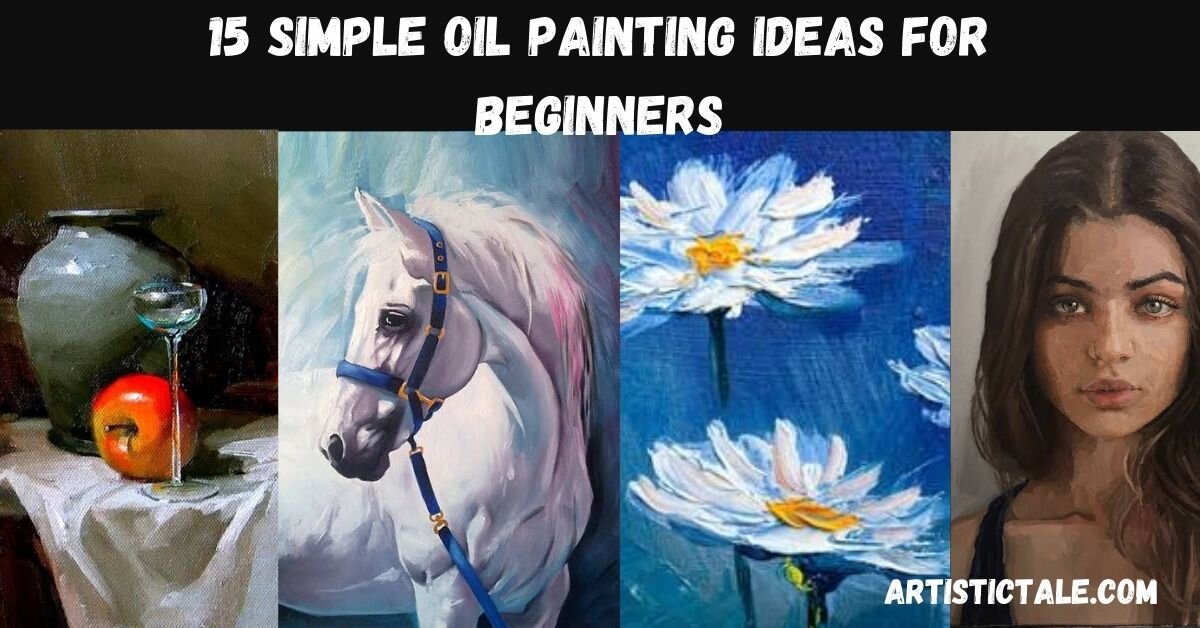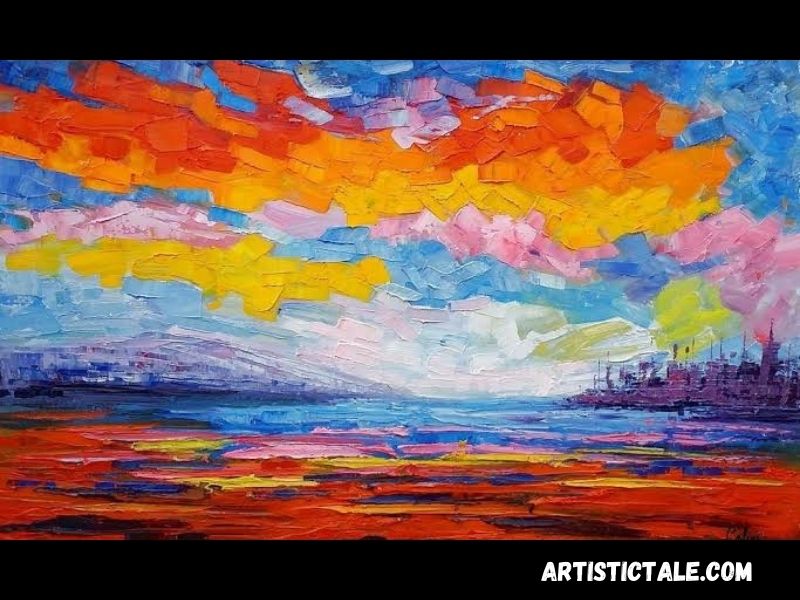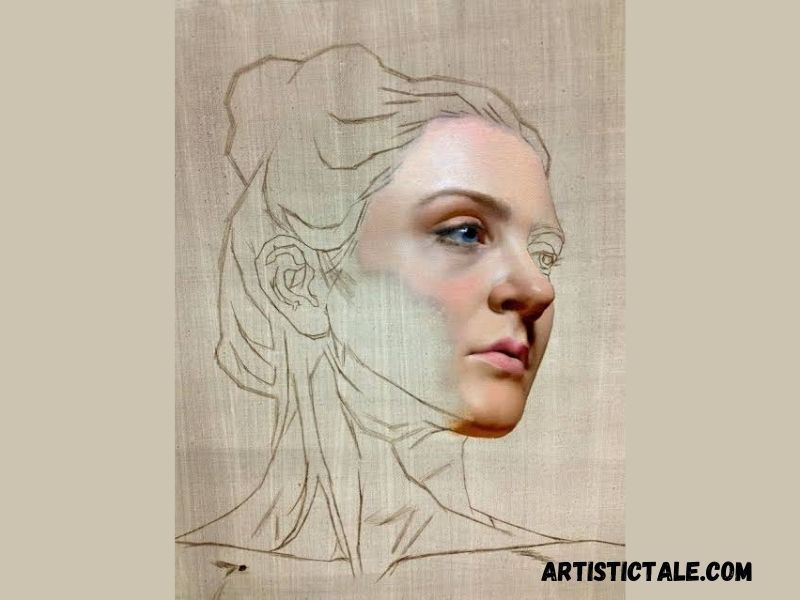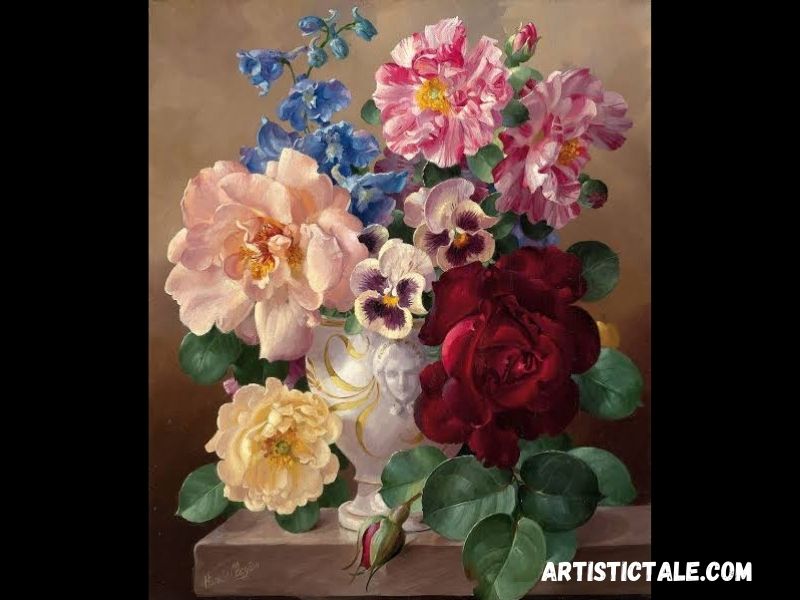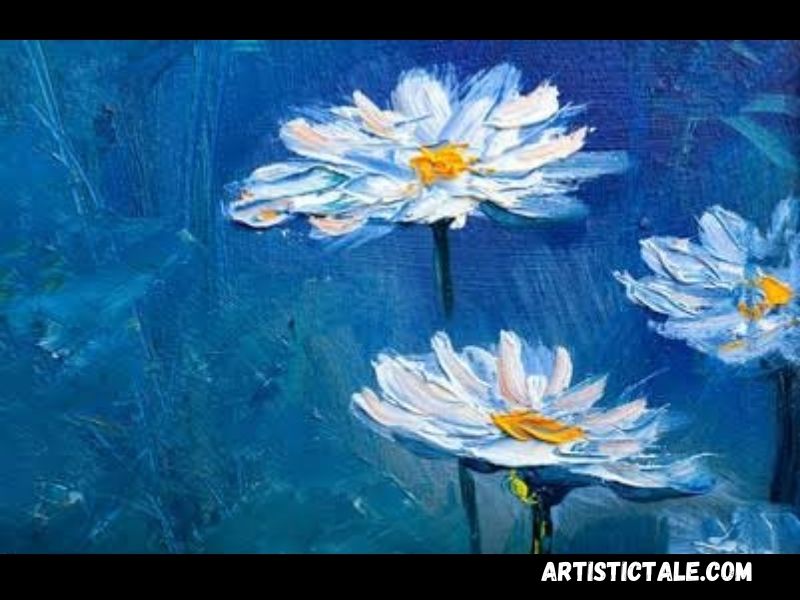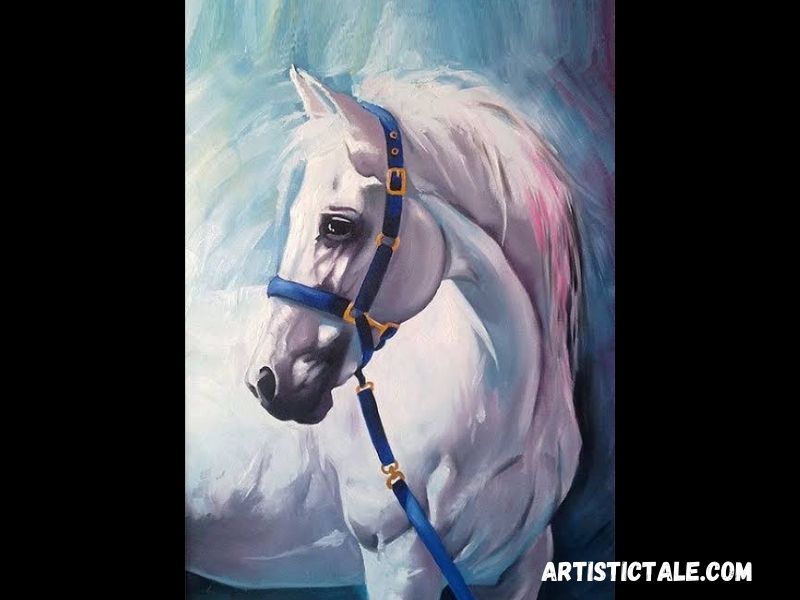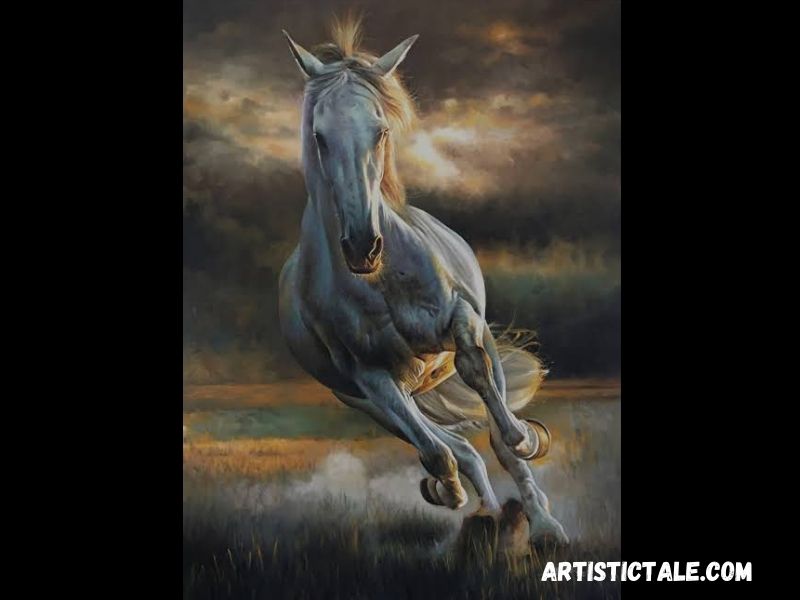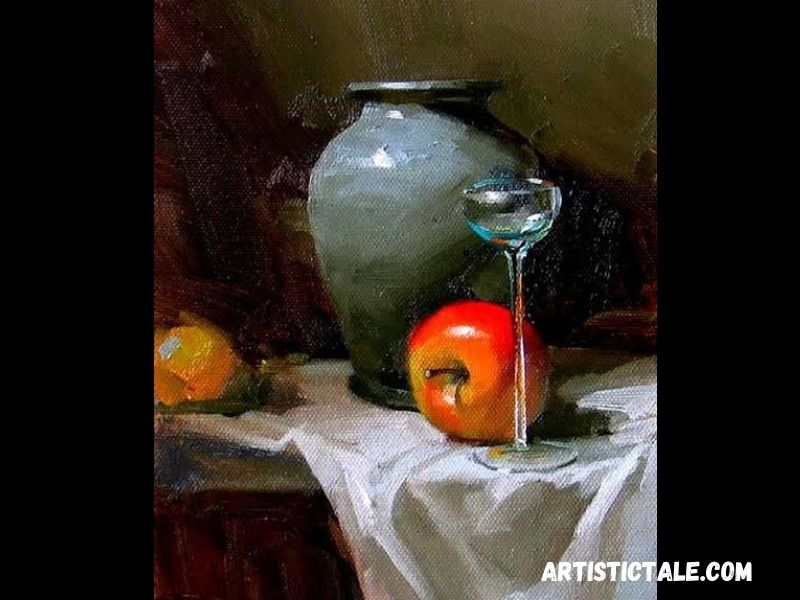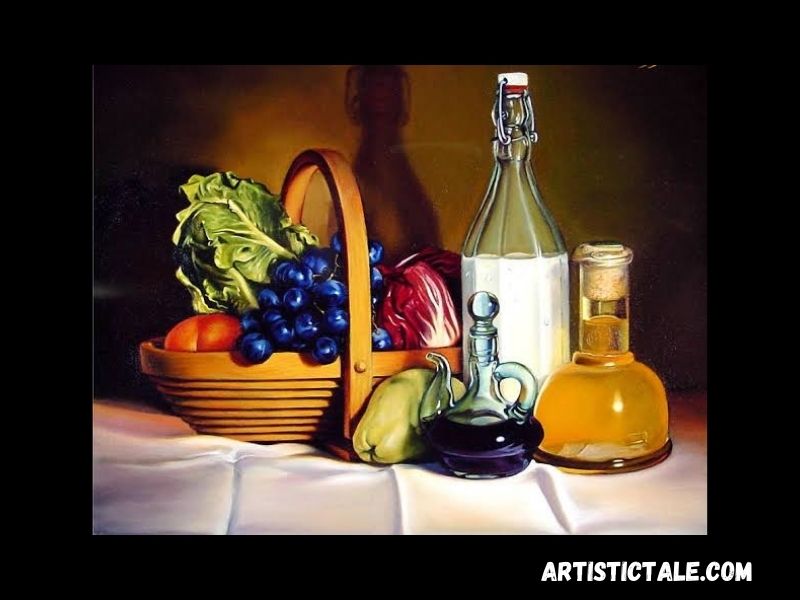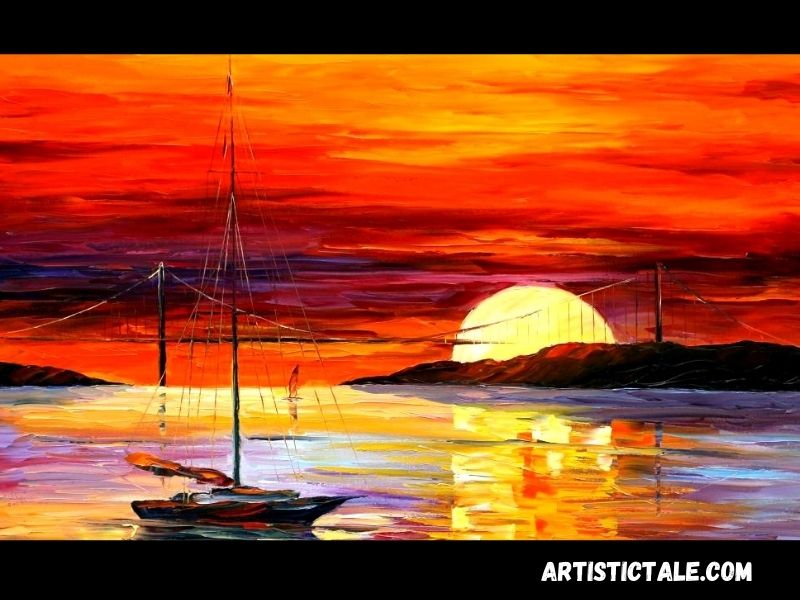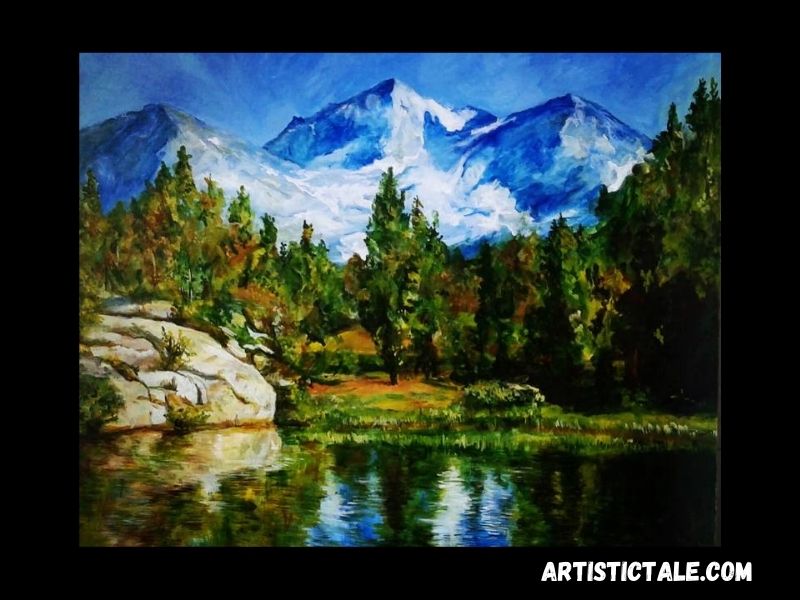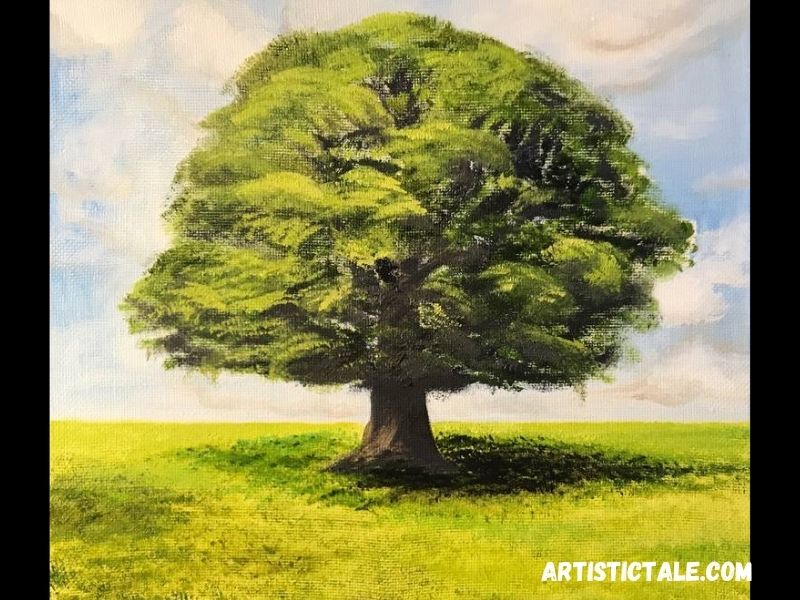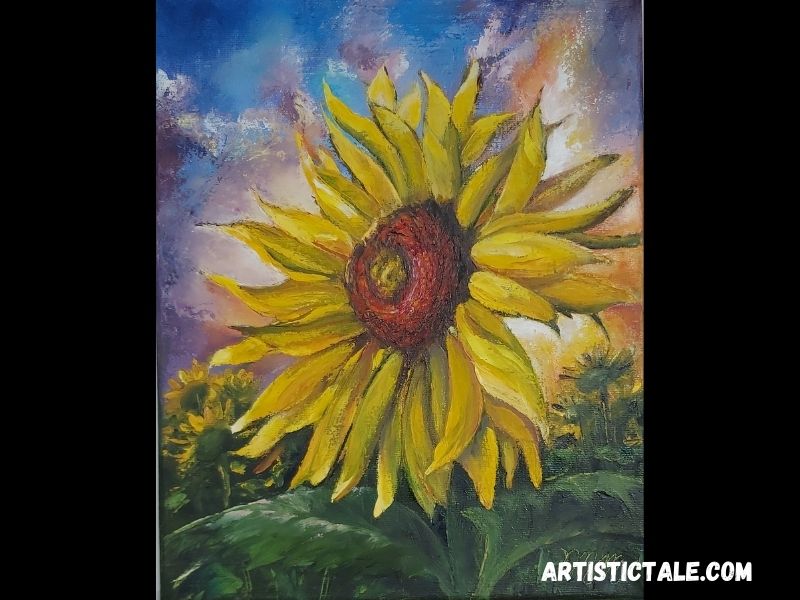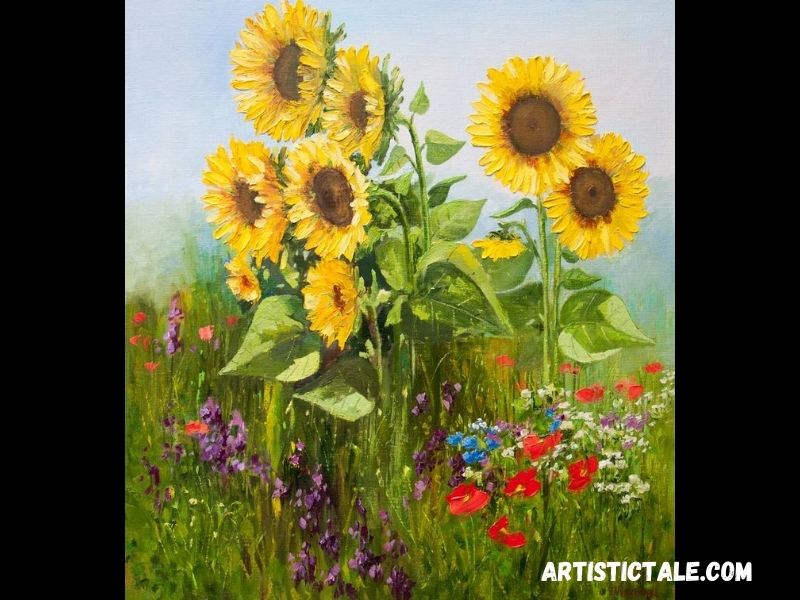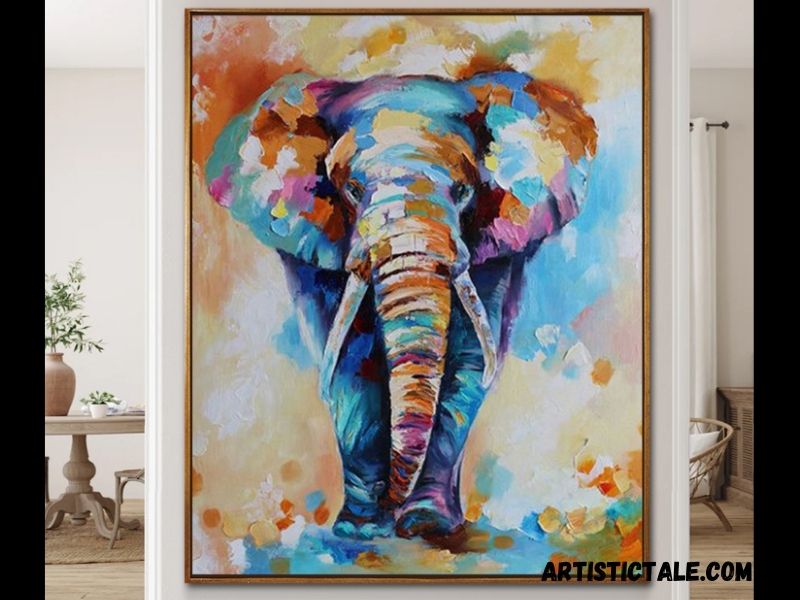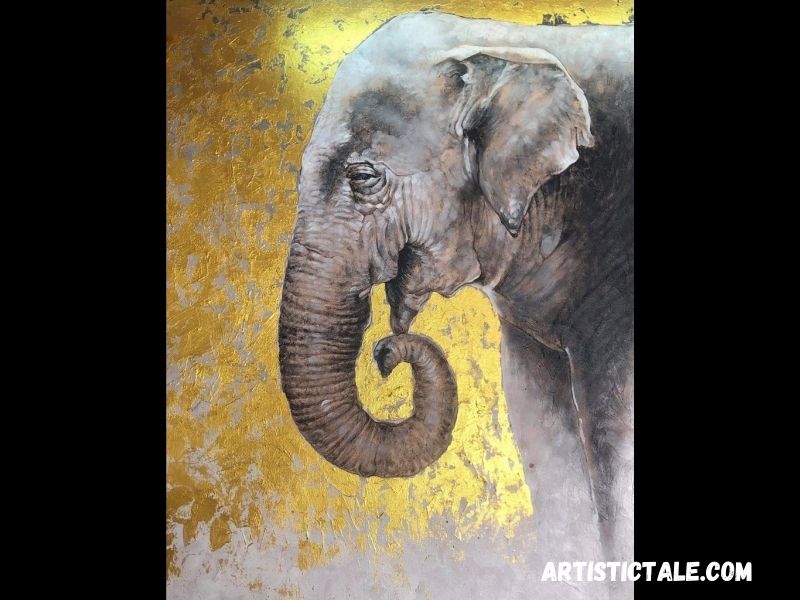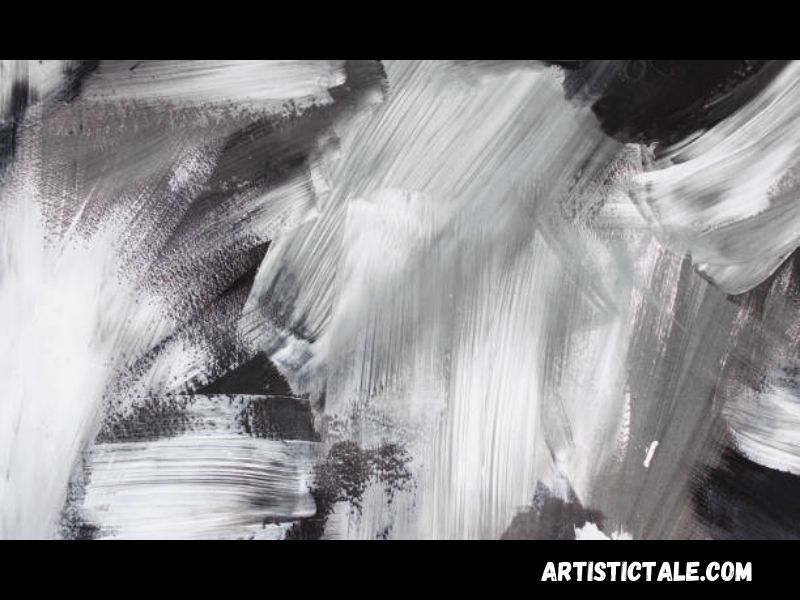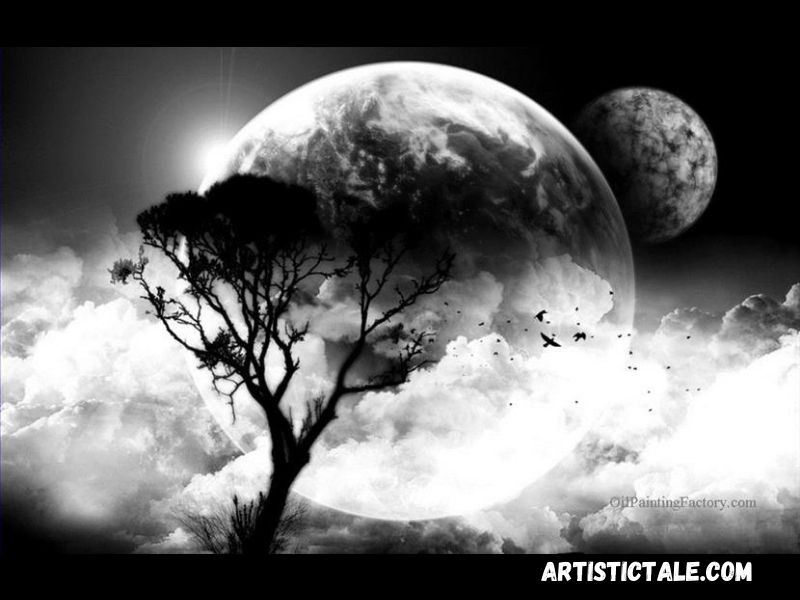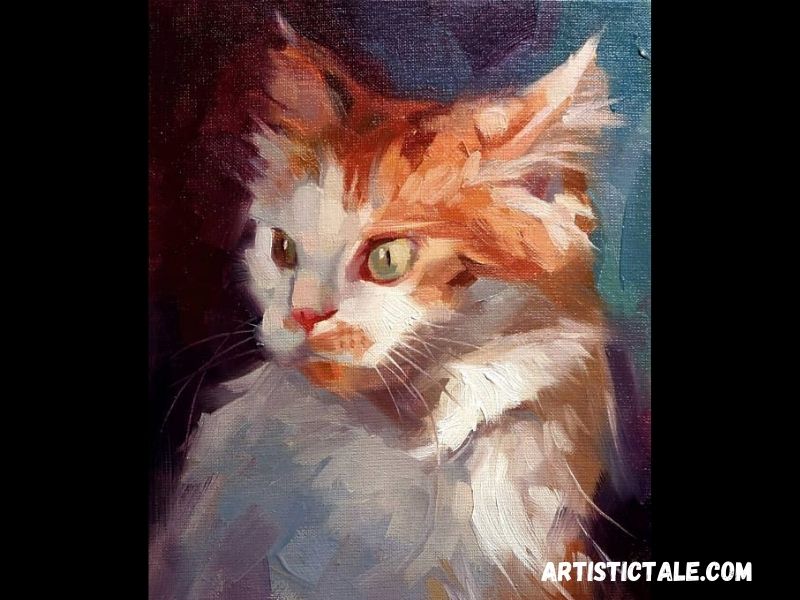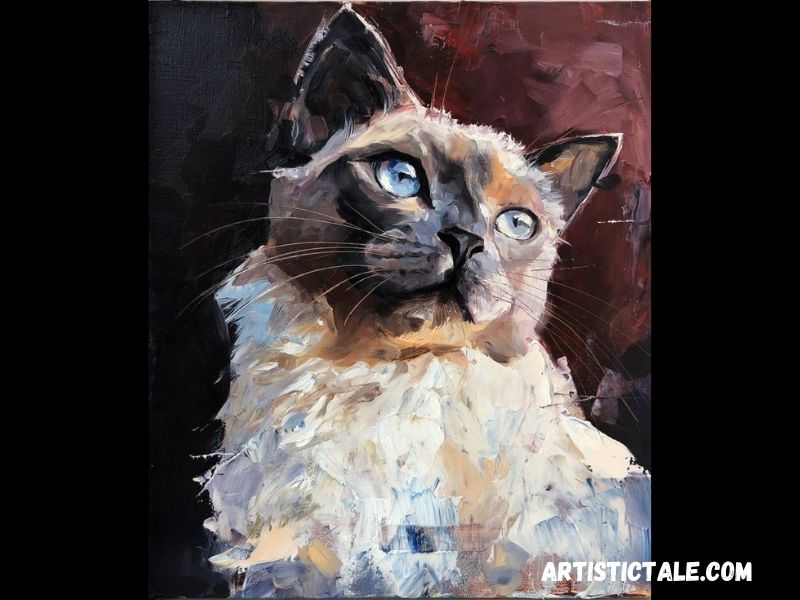Are you considering starting an oil painting but are hesitant because you believe it will be too difficult? In that case, this article will show you how to get started, because it’s all about oil painting ideas for beginners.
You may wonder why use oil paint and not any other media. Typically, people practice water-based painting such as acrylic or watercolor before moving on to oil painting and acrylic. No doubt watercolors are excellent. It is easy to paint beautiful things with them, so why bother with oil painting at all? Painting is painting; where’s the difference? The primary difference is working time; oil painting takes a long time to dry, giving you lots of time to combine colors, make changes to your painting, and work all day on a wet canvas. You can go get a cup of coffee or even a good nap and come back to find your paint still wet, giving you more control.
So what’s the wait for? But wait before you get into it; we have discussed the basic ideas for oil paintings and some fantastic tips before you start your creative artwork.
Table of Contents
Oil Painting Ideas For Beginners: The Basics
The suitable material to start with
Of course, everything stands and falls with the right essential equipment.
At a glance, you need the following items for a successful start in painting with oil:
- Oil paints in different tones,
- A painting knife to mix the colors,
- A mixed palette,
- The first set of brushes,
- Solvent,
- An oil, mainly linseed oil, is used here,
- Two containers for oil and solvent,
- Painting ground.
It is best to buy yourself a decent but not too excessive an initial set of equipment. So you can rest in peace and without significant investment, you can have fun painting with your stuff and can get oil painting inspiration. Then, if you enjoy it, you can increase your loadout over time.
Importance of painting medium
When it comes to the material, you will undoubtedly stumble across the field of mediums.
The mediums are added to the oil paint to achieve different effects. Painting materials will help you:
- to mix your oil paints and adjust their consistency,
- let the paint dry faster or slower,
- to give the colors special protection,
- affecting the brilliance of the colors.
The drying time when painting with oil paints
Oil paints dry very slowly compared to most other paints. In oil painting for beginners, this can sometimes lead to confusion or frustration.
If you want your oil paints to dry faster, you can help with the appropriate painting medium. However, the long drying time also has its advantages. As you can take breaks when painting with oil paints and later continue working wet in wet exactly where you left off. You can also take your time painting. This makes it easier for beginners to achieve beautiful results in oil painting! and produce some cool oil paintings for their own gallery.
Painting techniques when painting with oil paints
You shouldn’t completely ignore the technique when it comes to beginner oil painting ideas. This mainly refers to the way you paint and mix your colors. We differentiate between applying paint wet-on-wet and applying paint in layers in oil painting.
When working wet-on-wet, you paint your entire picture in one layer. Usually, without any additives, oil paint dries so slowly that you can finish your painting wet on wet even if you take breaks in between. If you paint in layers, each previous layer must first dry before starting the next layer. This is where you will want to set your paint to dry faster. Otherwise, it can take a very long time to finish your painting.
Mixing oil paints
In general, the mixing of oil colors proceeds in the following steps :
- Prepare oil and solvent.
- Mix the oil and solvent in the desired ratio.
- Then use your cleaning brush to apply a stroke of the solvent-oil mixture to an empty area of your palette.
- Then use this medium mixture to mix your oil colors on the palette as desired.
Oil painting for beginners Step By Step: 10 tips to make it work!
Armed with this basic knowledge, you should be able to start oil painting for beginners! Nevertheless, we want to give you 10 extra tips to get you started.
- Tip #1: Keep your head outside the door
The essential oil painting tip for beginners is: Don’t listen to the thoughts that tell you that painting with oil colors is somehow “too difficult” for you. Many do not dare to use oil paints at first. In retrospect, you will find that oil painting is not as difficult as you imagined, even for beginners!
- Tip #2: Start small
Of course, you can paint wonderfully detailed portraits of landscapes in oil – but you should start small. If you are already experienced in representational drawing or painting with other materials, start with simple objects you copy.
But oil painting can also work abstractly. This is often particularly useful for trying things out for the first time.
- Tip #3: The correct oil paint for beginners
For beginners, you don’t necessarily need a vast selection of different colors for oil painting. Restrict yourself to basic tones and learn how to mix colors correctly from them.
- Tip #4: The Brush Starter Set
You don’t have to start with a massive set of brushes, either. Special brushes for oil paints are not for everyone and are not absolutely necessary. Buy 2-3 flat brushes of different sizes in a mid-range price range. That will be enough for the first motifs!
- Tip #5: The suitable painting surface for beginners in oil painting
If you have advanced in your skills, you are welcome to prime your painting ground yourself. However, for starters, choose a painting surface that is pre-primed for oil paints; this will save you work and trouble.
- Tip #6: kitchen paper!
It’s actually quite simple: always have a roll of kitchen paper ready. Old cloth rags are not so practical with oil paints. The kitchen paper is not only suitable for wiping up; you can also use it to correct the picture or, if necessary, wipe off the paint application completely.
- Tip #7: Use drying time to your advantage
We have already discussed the advantages of the long drying time above, but it should be mentioned again here. Take advantage of them! It allows you to learn to paint with oil paints in peace and without hectic weather.
- Tip #8: Don’t get bogged down with your painting materials
Yes, mediums can be very helpful when painting with oil paints. However, oil painting for beginners usually works with a solvent and oil. You don’t need more beautiful pictures. You can then work with the other painting materials at your leisure once you have mastered the essential oil painting techniques.
- Tip #9: Avoid stains on your favorite sweater
Oil paint is highly pigmented and greasy. You guessed it: it looks great on canvas, but not so much on your favorite sweater. If in doubt, you won’t be able to get stains out at all. So wear old clothes that can also get stains!
- Tip #10: Look for help
Oil painting for beginners is beautiful, and it can become an advanced hobby with practice. Sometimes a little guidance on this path is very useful, for example, through a modern and uncomplicated online oil painting course.
Fantastic Oil Paintings For Beginners
Abstract Oil Painting
It’s a popular thought that an abstract artist should be a true poet by heart to instill beauty into paintings. Artists deeply into abstract art have to give up the thoughts of literal perception. From the viewer’s end, abstract paintings require the viewer’s active participation in keeping behind the ideas and realities. Once the mind is free of everything, you can feel the energy and power within an abstract oil painting.
Landscape Oil Painting
Are you looking for a unique name from the list of oil paintings for beginners? Give a try on landscape oil painting. To start off, select your favorite scenery or photograph (I prefer the mountains). Begin by creating a grid across the canvas and picture, then draw the subject and color the background. Finally, double-check to make sure you haven’t forgotten anything. You’ll be able to create a masterpiece this way. When you’re finished, sit back, relax, and admire your work of art.
Portrait Oil Painting
A portrait made with oil painting is a soothing sight! Start off by creating an attractive magnetic image. Then draw the complete outline using sharp and bold edges. Next, paint the eyes, pay attention to details, and darken any places you believe should be magnified. After that, apply the final colors by layering the lighter hues on top. To finish off, add the finesse touch and the ending highlights, and make final touches that you feel are lacking from the portrait. Boom! You’re done. Wasn’t that easy?
Oil Painting Of Flowers
The flower paintings are more aesthetic and beautiful when done in acrylic paint. However, the most important thing for you is to choose appropriate colors to get the best out of your efforts. After that, draw the flower’s shape accurately to get it done. Of course, the background cannot be ignored. Furthermore, if you choose to draw roses, they look fantastic because they represent Mary’s religious purity. The bouquet of roses represents the collective morality of all Christians’ devotion to their faith. When drawing a flower, just remember to arrange the layers properly.
Horse Oil Painting
You can nail a horse oil painting by knowing how to grab a reference and sketch it well. You’ve completed half of the work for this variety from the list of oil painting ideas. You would need to choose a strongly built horse to get the painting done. Once sketching is completed, select the necessary colors and start coloring the base. After finishing with shading and highlighting, contour the features and design the background. In the end, sharpen the horse’s face.
Still Life Oil Painting
It’s a perception amongst artists that still life painting is accessible as being an artist; you would have a full grip over your paintings while drawing the still life oil painting. All you need is a good source of light. It may come from outside the window, or you can create your own artificial light setup. Once you’re done doing that, finalize the composition and then draw the sketches. Afterward, start filling in the suitable colors. Get immersed in your imagination and give it your all to produce a still-life oil painting.
Sunset Oil Painting
Draw a sunset while enjoying and playing with as many colors as you want. Put your hands on dashes of colors like yellow, orange, golden yellow, a mixture of red and yellow, as well as a combination of shades like blue and purple, to create shadows, bearing in mind the hues of sunset. When it comes to reflecting it on the canvas, sunsets are pretty famous. Begin with decorating the background and consider merging and mixing all of the colors to create a fantastic and artistic view in the list of cool painting ideas. You may also include a boat on the beach to make your art a complete package!
Mountain Oil Painting
Mountains are covered in a mysterious haze that envelops the gigantic building. Artists admire them because of their great strength and grim but serene aspect. You can draw it wholly white or add golden colors; either way, the solid hazy effect remains the same. A mountain with scenery is also a very typical go-to picture for beginners. Perhaps you could try it and enhance your painting talents at the same time. Wasn’t that an excellent idea?
Tree Oil Painting
It’s time for you to think outside the box! This name, which is on the list of easy oil painting ideas, deviates from the preconceptions by allowing us to paint the leaves in burgundy, orange, or blue instead of the traditional green and brown. Not only that but there’s more for you to consider. Colors for the background can also be considered. It’s not as difficult as it seems because all you have to do is mix the colors comprehensively in your palette before placing them in the background.
Sunflower Oil Painting
Why do sunflower paintings give a mesmerizing look? Simple, because they are massive, are brightly hued, and if enhanced with hues of bright yellow, they look beautiful and eye-catching. The most crucial element is to have the center circle and petals in the correct shape. Once you succeed in doing that, the rest shall fall into place automatically. You may go for a host of flowers or a group of three instead of just one. Again, it’s all up to you. Once you have completed the painting, you can place it in your bedroom to get all the positive vibes.
Beach Oil Painting
Beaches provide either the vacation atmosphere or the ultimate tranquillity that people seek. So, when considering this option from the collection of beautiful oil painting ideas, you can paint in different ways. For example, you can go for a female resting on the beach, gazing peacefully at sea, or a typical beach vacation scenario. No matter what you go for, the painting will take on a whimsical tone when the colors are placed in the right way. Furthermore, either sunrise or dawn are the outstanding features to look at while looking at the artwork.
Elephant Oil Painting
Elephants are magnificent creatures, and their glossy white tusks ensure that the artworks never lose steam. The full elephant picture, especially the tusks, is the main part of the drawing, while the overall theme is best set against a wild background. There are, however, other possibilities. The standard colors that we would like to use include black, charcoal, brown, and other deeper shades. What about a bright elephant to release your frustration? Yes, you can absolutely go for different vibrant colors too.
Black And White Oil Painting
Our favorite color scheme is monochrome. A monochrome image conveys more unsaid words than a color image. Thus, you can go the extra with this one. Simply ensure the background is simple. Just use glossy black paint to go deep because it provides the most coverage. Furthermore, black is quasi and can be thinned to achieve the required gloss.
Cat Oil Painting
Maybe you are a cat lover? This is the one you’re looking for. Personalization is the best element of this artwork. Cats come in a variety of colors and come from a variety of origins. Don’t overlook their vibrant green stare. What do you think the painting’s major highlight is?
That brings us to the end of our collection of beginning oil painting ideas. Works of art are always enjoyable to look at, and they elicit a special kind of joy. So it’s a cycle in which the artwork, the painter, and the viewers, all three of these, are involved in developing the masterwork. Returning to the oil paintings, they have a unique trait that is difficult to locate. What else is there to adore about oil paintings? Aside from that, the paintings’ realistic appearance is something we can’t overlook.
Final Lines…
Is oil painting more complicated?
The majority of people feel that oil painting is more difficult than other mediums. However, this is not true. Oil painting is possibly the most tolerant medium because you have enough time to make changes.
Are oil paints toxic?
No, it is a misconception. However, without proper care, it can become unsafe. The basic paint container simply includes oil and pigments; it has no odor and will not hurt you if you do not swallow it, thus paints themselves are not concerning. However, the oil solvent for example mineral spirits can be harmful as they evaporate and their vapors can be harmful if inhaled. This is why you should paint in a well-ventilated room to prevent all risks solvents and mediums should be used in moderation and all containers should be kept shut as much as possible.
Is oil painting easy for beginners?
Some people believe that oil painting is difficult for beginners, however, this is untrue once you grasp a few fundamental skills. When you consider the issues with fast-drying acrylics, it is actually simpler than watercolor and even simpler than acrylics.
What are the basic steps in oil painting?
Six essential stages to help you create an oil painting
- picking a topic
- painting composition
- A first drawing
- introductory layer
- adding several coats of paint
- final coats and touch-ups
What causes oil paintings to crack?
Under the action of oxygen and light, oil paint dries. This procedure uses chemicals. Even after the paint has dried, the oxidation process keeps on and ages the paint. This may eventually manifest as cracking.
